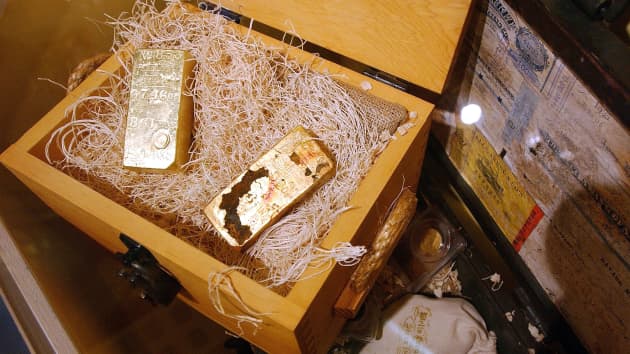SPONSOR: Advance Gold AAX.v – Advance Gold controls 100% interest in the Tabasquena Silver Mine in Zacatecas, Mexico. A cluster of 30 Epithermal veins have been discovered, with recent emphasis on exploring a large anomaly to drill. Advance also owns 15% of the Kakamega JV attached to Barrick Takeover Offer for Acacia Mining. Click Here For More Info

- Uncertainties surrounding U.S.-China trade relations and Britain’s departure from the European Union influencing gold price
- The dollar climbed to a more than two-year high against other major currencies, making dollar-denominated gold costlier for investors holding other currencies.

Gold prices held steady on Tuesday as uncertainties surrounding U.S.-China trade relations and Britain’s departure from the European Union offset pressure from a stronger dollar.
Spot gold was up 0.1% at $1,532.48 per ounce but still not far off its more than six-year high of $1,554.56. U.S. gold futures were up 0.8% at $1,541.40.
“We are having a battle right now against multiple layers of uncertainties in the market and a strong dollar,†Saxo Bank commodity strategist Ole Hansen said.
“The trade talks between U.S. and China are going nowhere. The political debacle in the UK with Brexit, where we are potentially facing another vote before the day is over, is adding enough underlying support to gold to offset the strength in dollar.â€
The dollar climbed to a more than two-year high against other major currencies, making dollar-denominated gold costlier for investors holding other currencies.
On the trade front, China has lodged a complaint at the World Trade Organization over U.S. import duties, trashing the latest tariff actions as violating the consensus reached by leaders of both countries at a meeting in Osaka.
In Britain, lawmakers will decide on Tuesday whether to move towards a snap election when they vote on the first stage of their plan to block Prime Minister Boris Johnson from pursuing a no-deal Brexit.
But analysts said that fears of a deceleration in global economic growth, negative yielding debts around the world and hopes for interest rate cuts by global central banks also provided support for gold.
“Given this week’s economic calendar is jam-packed with crucial economic releases that will shape monetary policy expectations for the September 18 Federal Open Market Committee meeting, gold traders are trading very delicately waiting for more convincing U.S. economic signals,†VM Markets Managing Partner Stephen Innes said in a note.
Investors are awaiting the U.S. manufacturing survey by the Institute for Supply Management (ISM), due at 1400 GMT, for some forward guidance on U.S. economic conditions.
Federal fund futures implied traders saw a 91% chance of a 25 basis point rate cut by the U.S. Federal Reserve this month.
“Rate cut will happen almost no matter what kind of economic data we’re going to be presented with from now on until the Fed meeting but any acceleration to the weaker side could increase the expectations of how big the cut would be,†Saxo Bank’s Hansen said.
Silver rose 0.2% to $18.48 per ounce. Platinum was up 0.9% at $938.34 per ounce, while palladium gained 0.3% to $1,535.79.
SOURCE: https://www.cnbc.com/2019/09/03/gold-markets-us-dollar-in-focus.html




















